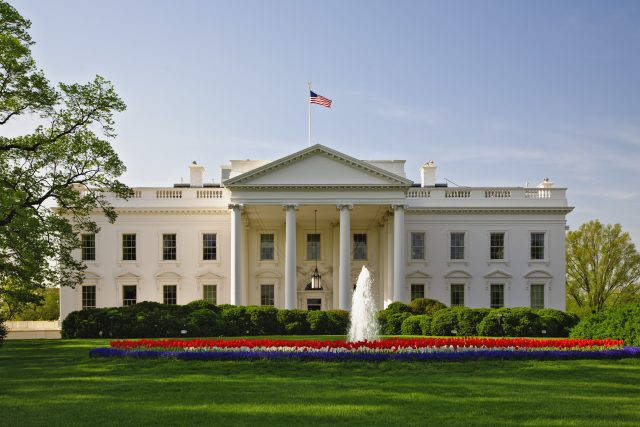Components of a Magnetic Inbound Marketing Strategy

Email marketing, SEO, content creation, social media, influencer outreach, lead nurturing. Yes, inbound marketing encompasses them all. And let’s face it — that’s enough to inspire fear in the steeliest and most seasoned of digital marketers. With so many tactics to consider and too many leads to deliver it’s easy to lose focus of what you’re trying to achieve. That’s where a well-crafted plan comes into play. Below we’ll reveal the strategic 7 step process that will help you deliver a customer-warming, boss-pleasing, prospect-loving strategy that’s achievable, realistic and bang on target.
Define Your Personas
Inbound marketing is all about your customers — you have no business in the um… business, if you center your plan around any other silly tactics, tricks or gimmicks. The first step of your plan should, therefore, focus on understanding what makes your customers click, tick and get excited. Get to the heart of your customers’ thoughts, behaviors, problems, needs, and desires by creating well-fleshed-out, fully-defined and real-to-life personas.
Use HubSpot’s (free) Make My Persona Tool to create personas worth referencing. Your entire inbound marketing strategy should be built around your core personas — you’ll storm ahead of your competition if you consult these fictional customers at every stage of your planning process. This includes when you’re creating blog posts, crafting email campaigns and conducting keyword research — you can even bring them into your brainstorm meetings to add real insight and depth to your ideas.
Discover Your Customer’s Triggers
Pain Points — You need to understand at which points your customers interact with your messages. It is important to identify the pain points your customer's experience and the problems they encounter to make them search for your product or service. This core insight alone can add true depth to your messages.
Think about it — identifying your customers’ pain points enables you to target people with both reason and emotion at a time that makes sense to them. You’re basing your messages on real solutions rather than assumptions. And make no mistake about it — your competitors will assume rather than take the time to identify real solutions for real persona problems. That way you’ll win.
Different Needs for Different Stages — You’ve probably heard many digital marketers talk about the concept of context. Not all of your customers have the same needs — some arrive at different points of the buying funnel. When mapping out your pain points it’s essential to add context by considering the needs and desires of your different customer types at each separate stage of the operation.
Set Your Inbound Marketing Objectives
You will need to determine from the outset which inbound marketing objectives you would like your strategy to achieve. These should support and help you achieve both your digital marketing objectives and your business objectives. For example, if lead generation is the most important objective for your business, your inbound marketing plan should be centered around generating leads. And every tactic you employ should support your lead generation mission.
As with every digital marketing plan, your inbound marketing metrics need to be SMART. That means strategic, measurable, achievable, realistic and time-bound. If in doubt, identify the information your CEO would want reported back to him/her in the boardroom — you need to answer the ‘what’, ‘how many’ and ‘when’ of your plan. For example, ‘We’re going to generate 200 new leads in a quarter.’ Each KPI needs to be realistic and achievable based on the success of past campaigns along with the predicted success of your inbound plan.
Define Your Content Strategy
Content is an integral part of inbound marketing. You will, therefore, need to create a content marketing plan to form the beating heart of your inbound marketing strategy. This is how you will keep your customers engaged with your brand and nourished with rich and valuable information. This is how you will keep your name on their minds at the point when they’re ready, willing and able to buy.
The Objectives — Your content strategy objectives should be SMART and need to support your inbound marketing objectives. Maybe they’ll be similar. If your inbound marketing objective is lead generation, for example, your content strategy should certainly support this.
Competitor Analysis — The purpose of this phase is not to copy your competitors but to define how you can be better. Research your competitors content marketing and investigate what they get up to on social media using a social media monitoring tool like Hootsuite. Sign up to their newsletter so you can partake in their lead nurturing campaigns and use a tool like Moz’s Open Site Explorer to track backlinks and discover how your competitors score on their overall SEO performance.
The Content — First it’s important to define how your content will help your customers. Will it educate them? Inspire them? Entertain them? Then you can decide on the types of content you’ll create and the topics you’ll tackle. For example, will you concentrate solely on blogging or will you try video marketing and webinars? Will you create long form posts or opt for shorter but more regular features? Will you seek industry expert opinions?
More questions to consider at this phase include: Is lead generation important for your business and if so will you create gated whitepapers to help you generate new, quality leads? If you have a shoe company will you stick to writing about shoes or will you venture into the area of fashion and lifestyle?
Distribution — It’s equally important to create a plan for distributing your content. Will you enlist the help of industry influencers or will your trial paid promotion options like LinkedIn advertising, Facebook and Twitter ads or third party platforms?
Define Your Lead Nurturing Plan
Sometimes your customers will discover your website when they’re not quite ready to buy yet. Maybe they need more questions answered, maybe they need more time to decide whether it’s the right product/service for them, maybe they want to research competitor offerings or maybe they don’t have the money saved at that point in time. Whatever their reason for stalling, it’s your job to keep them warmed up for the sales team to prospect or until they’re ready to buy.
Automated email trigger campaigns provide the perfect means to nurture leads. It gives you the ideal opportunity to keep prospects engaged with your content, your brand and your mission. You can segment your lead database based on the action your prospects took to give you their details. You can then set about creating a series of tailored and relevant messages.
Establish Your Influencer Outreach Agenda
Building quality relationships with key industry influencers is one of the most important components for inbound marketing. That’s because these people hold significant reach and authority in your industry. They have already established trust and have hundreds of thousands of social media followers — followers who look just like your customers.
The Target List — Use a tool like BuzzSumo to help you identify and create an outreach list of potential influencer targets. Then you can set about creating mutually beneficial relationships with these industry influencers. Always give more than you take — offer value and lots of it well in advance of asking for anything back. Once you have established a true connection with these influencers you can ask for a quick quote and a potential share in the politest and most humble manner possible.
Guest Blogging Plan — It’s also important to define your guest blogging approach at this stage. Research potential relevant and influential blogs in your niche and read the submission guidelines. You’ll can create a pitch at this stage if you wish but you will have to make sure it’s customized and relevant for every publication you approach. Read this guide ‘Influencer Cheat Sheet: How to Connect, Engage & Get What You Want’ for more tips on how to perfect your personal approach.
Decide How to Analyse & Report
Now that you have your inbound marketing plan in place you will need to decide upon the tools you’ll use to report on the progress of your objectives and the success of your KPIs. Will you, for example, use Google Analytics to track your goals and conversions? Will you use BuzzSumo to track the success of your content marketing and break down your shares by platform? Will you use Moz’s Open Site Explorer to monitor your SEO progress?
Want to become an Inbound Marketing Specialist? Our Online Professional Diploma in Search Marketing is created, validated and accredited by industry experts and will give you the specialist knowledge needed to thrive in the field.
Chuck Reynolds
Contributor
Alan Zibluk Markethive Founding Member












 Specifically, a recent EU chamber report found that 57% of respondents felt foreign companies were “treated unfavorably compared to their domestic counterparts,” and 56 percent said that doing business getting more difficult. At the same time, China has a lot of so-called “hot” money “that has to go somewhere,” explains Huobi CMO, Du Jin.
Specifically, a recent EU chamber report found that 57% of respondents felt foreign companies were “treated unfavorably compared to their domestic counterparts,” and 56 percent said that doing business getting more difficult. At the same time, China has a lot of so-called “hot” money “that has to go somewhere,” explains Huobi CMO, Du Jin. Bitcoin offers unprecedented mobility and security of funds for the user. Today’s financial system makes moving money and gold around the world slow, costly and inconvenient due to friction and capital controls. Not so with Bitcoin. Whether a few pennies’ or a million dollars’ worth, transfer fees are negligible while your funds are always with you on your device. In fact, it is reportedly becoming a new favorite method for wealthy Chinese to move capital out of the country and as a store of value similar to gold.
Bitcoin offers unprecedented mobility and security of funds for the user. Today’s financial system makes moving money and gold around the world slow, costly and inconvenient due to friction and capital controls. Not so with Bitcoin. Whether a few pennies’ or a million dollars’ worth, transfer fees are negligible while your funds are always with you on your device. In fact, it is reportedly becoming a new favorite method for wealthy Chinese to move capital out of the country and as a store of value similar to gold.




